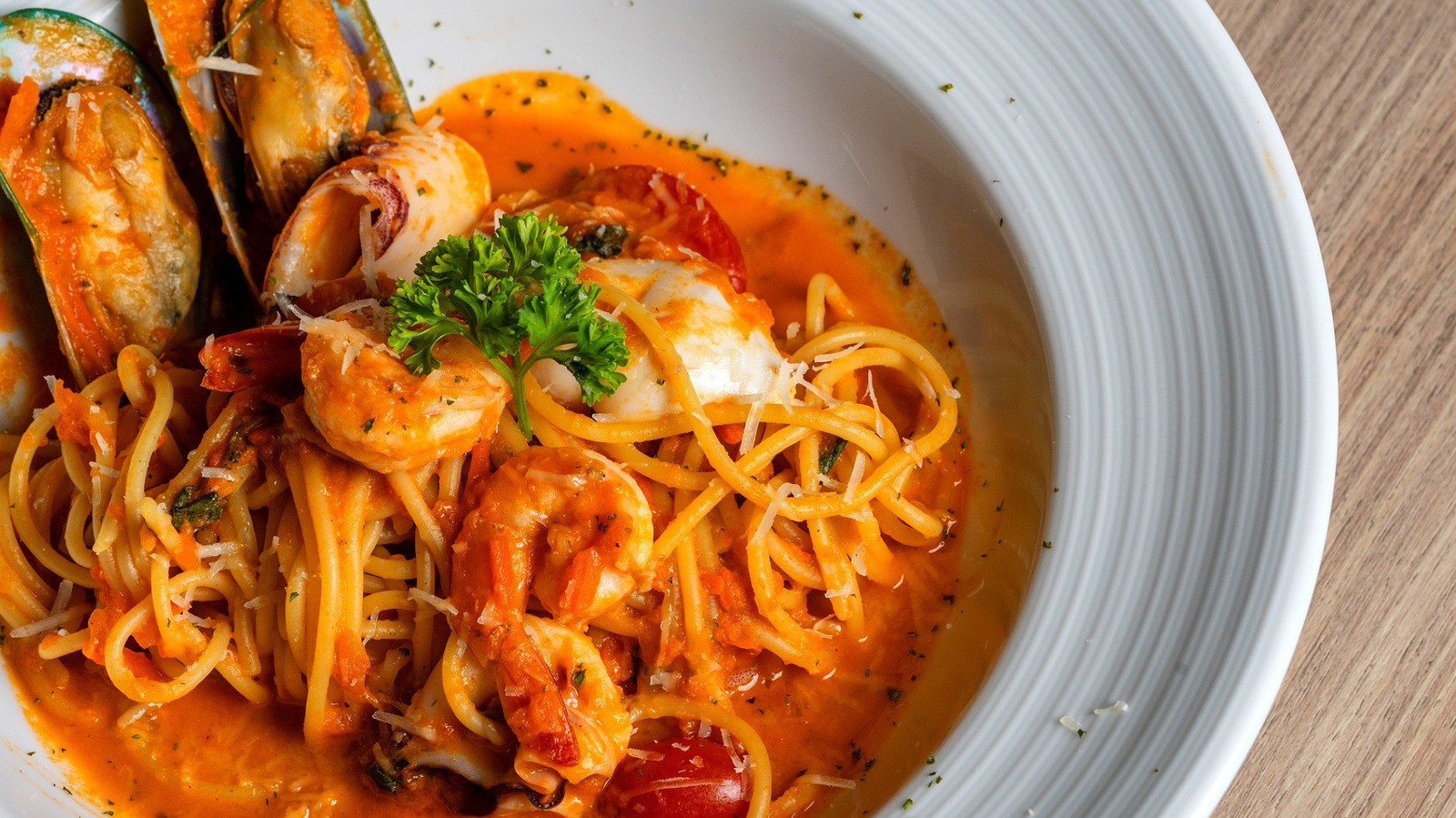Sometimes, you want your pasta to surprise you. Sure, it’s comfort food to a lot of us, and there’s something to be said about how some things just taste better because they’re familiar, but we all need a shake-up every now and then. Sometimes, we want our pasta to be spicier, taste livelier, and excite our taste buds again. If you want to give your pasta a zesty upgrade, all it takes is one of the ingredients you’ll find on really good Mexican food: Tajín.
Tajín is a seasoning mix made with lime, chili peppers, and sea salt, which are all also ingredients you can find in pasta sauces. Citrus and spice are often used to liven up tomato-based sauces, brightening up the flavor profile while adding a mild kick. You might also find the combination in non-traditional takes on pesto, which use the acid and heat to bring a refreshing, summery layer to the dish. Furthermore, in the same way that Tajín can give fruit a savory pucker, it can make sweeter pasta dishes like a sweet potato gnocchi more mouth-watering.
The balance of three distinct flavors — salty, spicy, and sour — is what makes Tajín such a versatile seasoning in the first place. Chefs are often taught that good food is made by harmonizing multiple taste elements; in the same way, the seasoning helps balance things out by adding just the right proportion of each of its flavors. Using it to enhance your pasta is more than just a random trick — It’s actually one of the most genius ways to use Tajín.
Which pasta dishes go best with Tajín
Aside from tomato-based sauces, Tajín is excellent with most seafood pasta dishes. The acid from lime and the spice of chili peppers work well in tempering the fishiness of seafood, allowing you to more fully enjoy all its other flavors. The brand itself even features a recipe for Tajín lemon shrimp scampi on its website. You can also try it in a sauce with canned tuna for an easy, no-cook weeknight pasta.
Tajín goes really well with creamy pastas like a classic bucatini cacio e pepe or fettuccine Alfredo as well. The lime in the seasoning acts similarly to lemon zest, cutting the richness of the cream and making it more refreshing. The heat from the spice, on the other hand, is made more mellow by the cream, bringing the earthier flavors of the peppers more forward.
If you want to go beyond traditional pasta, you could sprinkle Tajín on other noodle dishes, too. Pancit, for example, is a traditional Filipino food often served with calamansi — a small citrus fruit similar to lime — on the side, so Tajín would be a natural fit. Pad thai also already uses lime, chili, and salt among its main seasonings; a touch of Tajín would amplify all those flavors. Chicken noodle soup feels even warmer with the mild heat that the seasoning blend adds, while the tanginess has you salivating for more. Try it out on any of your favorite pasta or noodle dishes; there’s a good chance it’ll make them even more craveable.






